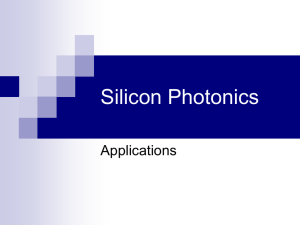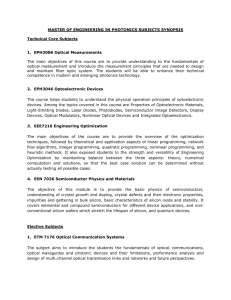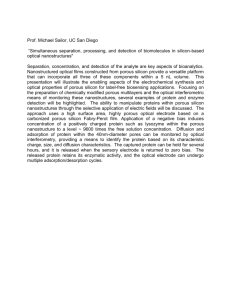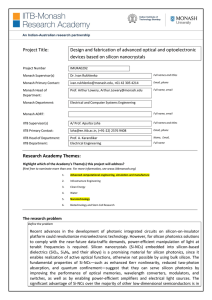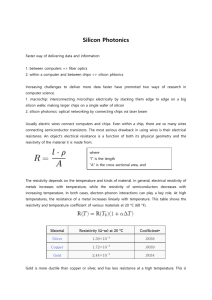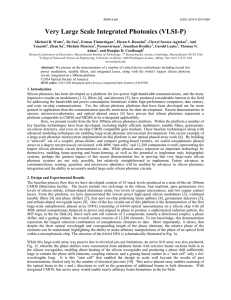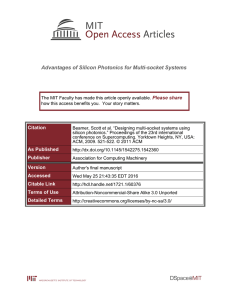Silicon Photonics
advertisement
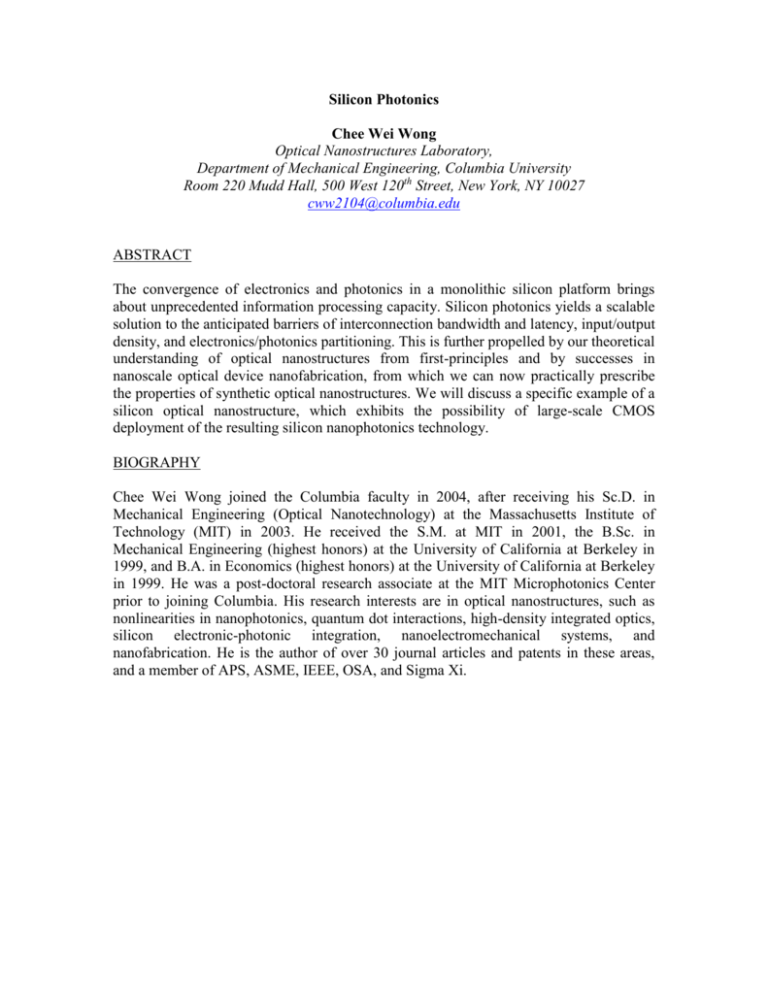
Silicon Photonics Chee Wei Wong Optical Nanostructures Laboratory, Department of Mechanical Engineering, Columbia University Room 220 Mudd Hall, 500 West 120th Street, New York, NY 10027 cww2104@columbia.edu ABSTRACT The convergence of electronics and photonics in a monolithic silicon platform brings about unprecedented information processing capacity. Silicon photonics yields a scalable solution to the anticipated barriers of interconnection bandwidth and latency, input/output density, and electronics/photonics partitioning. This is further propelled by our theoretical understanding of optical nanostructures from first-principles and by successes in nanoscale optical device nanofabrication, from which we can now practically prescribe the properties of synthetic optical nanostructures. We will discuss a specific example of a silicon optical nanostructure, which exhibits the possibility of large-scale CMOS deployment of the resulting silicon nanophotonics technology. BIOGRAPHY Chee Wei Wong joined the Columbia faculty in 2004, after receiving his Sc.D. in Mechanical Engineering (Optical Nanotechnology) at the Massachusetts Institute of Technology (MIT) in 2003. He received the S.M. at MIT in 2001, the B.Sc. in Mechanical Engineering (highest honors) at the University of California at Berkeley in 1999, and B.A. in Economics (highest honors) at the University of California at Berkeley in 1999. He was a post-doctoral research associate at the MIT Microphotonics Center prior to joining Columbia. His research interests are in optical nanostructures, such as nonlinearities in nanophotonics, quantum dot interactions, high-density integrated optics, silicon electronic-photonic integration, nanoelectromechanical systems, and nanofabrication. He is the author of over 30 journal articles and patents in these areas, and a member of APS, ASME, IEEE, OSA, and Sigma Xi.
